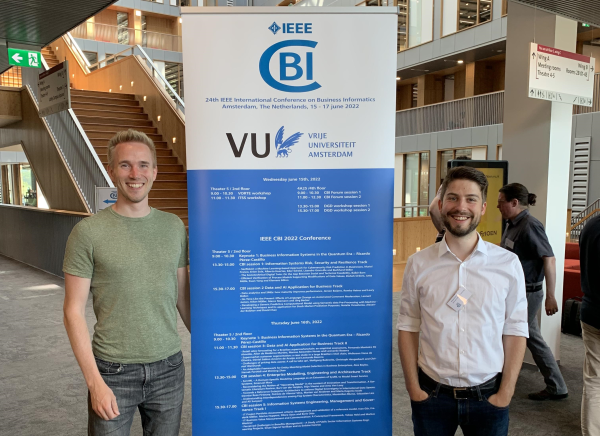New Articles published at 2022 IEEE International Conference on Business Informatics
(07.07.2022) We published our articles "Understanding Interdependencies among Fog System Characteristics" by Maximilian Blume, Sebastian Lins, and Ali Sunyaev and "Toward a Unified Framework for Information Systems Certification Internalization" by Philipp Danylak, Sebastian Lins, Malte Greulich, and Ali Sunyaev at the 2022 IEEE International Conference on Business Informatics.

Abstracts:
Fog computing adds decentralized computing, storage, and networking capabilities with dedicated nodes as an intermediate layer between cloud data centers and edge devices to solve latency, bandwidth, and resilience issues. However, introducing a fog layer imposes new system design challenges. Fog systems not only exhibit a multitude of key system characteristics (e.g., security, resilience, interoperability) but are also beset with various interdependencies among their key characteristics that require developers' attention. Such interdependencies can either be trade-offs with improving the fog system on one characteristic impairing it on another, or synergies with improving the system on one characteristic also improving it on another. As system developers face a multifaceted and complex set of potential system design measures, it is challenging for them to oversee all potentially resulting interdependencies, mitigate trade-offs, and foster synergies. Until now, existing literature on fog system architecture has only analyzed such interdependencies in isolation for specific characteristics, thereby limiting the applicability and generalizability of their proposed system designs if other than the considered characteristics are critical. We aim to fill this gap by conducting a literature review to (1) synthesize the most relevant characteristics of fog systems and design measures to achieve them, and (2) derive interdependences among all key characteristics. From reviewing 147 articles on fog system architectures, we reveal 11 key characteristics and 39 interdependencies. We supplement the key characteristics with a description, reason for their relevance, and related design measures derived from literature to deepen the understanding of a fog system's potential and clarify semantic ambiguities. For the interdependencies, we explain and differentiate each one as positive (synergies) or negative (trade-offs), guiding practitioners and researchers in future design choices to avoid pitfalls and unleash the full potential of fog computing.
DOI: https://doi.org/10.1109/CBI54897.2022.00021
Information systems (IS) certifications are often deemed as an effective way to address contemporary challenges in the IS domain, such as ensuring data protection and making artificial intelligence more trustworthy. However, IS certifications are only effective if organizations thoroughly internalize them. Internalization refers to the process of absorbing information underlying a certification (e.g., best practices and third-party feedback) into the organization and translating it into knowledge, procedures, and technical capabilities. Yet, research on the process of certification internalization is scattered and lacks an established framework. For this study, we conducted a descriptive literature review and synthesized existing research into a unified framework summarizing the certification internalization process. Our framework characterizes internalization as an iterative and continuous process comprising thirteen activities across five phases: initiation, preparation, assessment, implementation, and evaluation. This study contributes to a better understanding of certification internalization and can help to ensure certification effectiveness in practice. As the majority of certification internalization research is rooted in the management discipline, future research is needed to account for the specifics of IS in the certification internalization process.
